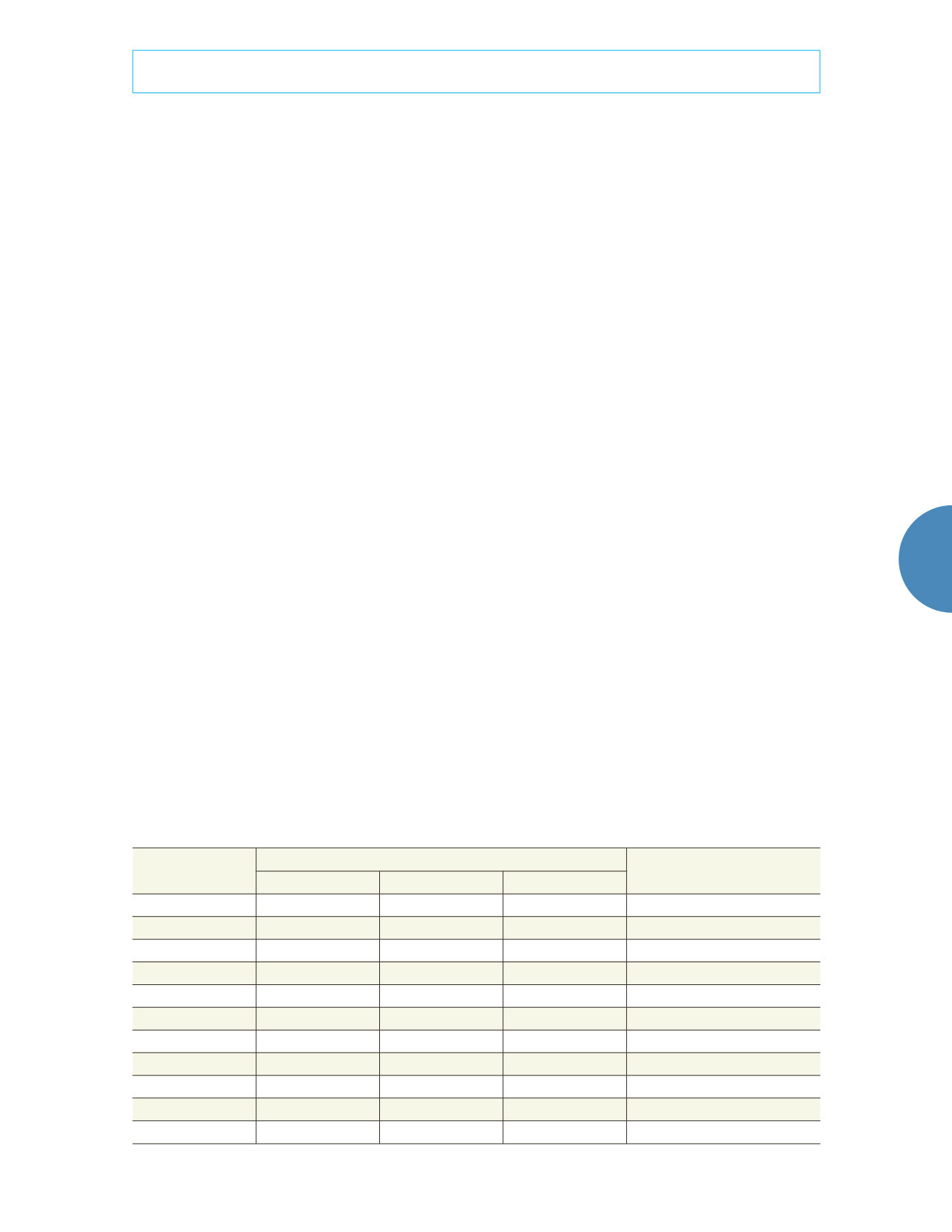
33
Tecnología y Ciencias del Agua
, vol. VIII, núm. 2, marzo-abril de 2017, pp. 31-41
Li
et al
.,
Particle size distribution and settling velocity of sediments in water diverted from the Yellow River during border-strip irrigation
ISSN 2007-2422
•
revealed that, during border-strip irrigation, the
irrigation method significantly affected the infil-
tration of muddy irrigation water into the soil.
Surface irrigation is still the primary irriga-
tion technique practiced in areas watered by
the Yellow River. However, few studies have
looked at the accumulation and distribution of
sediment on fields during border-strip irriga-
tion, and even fewer studies have examined
the mechanisms of incipient motion and de-
position of sediment on fields. This study was
conducted to investigate the distribution of
settled sediment on fields irrigated with water
diverted from the Yellow River, as well as the
infiltration of the water into the soil. The settling
of sediment particles during border-strip irriga-
tion was analyzed using methods presented in
related studies. This study is expected to pro-
vide support for irrigation projects that involve
diverting water from the Yellow River.
Materials and methods
A survey of the study area
The field experiment presented in this paper
was carried out in 2015 in the Zuncun irrigation
area, which is located in the Sushui River basin
within Yuncheng City, Shanxi Province. The
irrigation area extends 145 km in the east-west
direction and 30 km in the north-south direc-
tion. The YRWD project in this area is a Type
I large-scale hydraulic engineering project for
flood control, irrigation, and water supply;
furthermore, it constitutes the largest YRWD
project in Shanxi Province. This area features
an irrigation system consisting of pipelines
and ditches. Irrigation water is diverted from
the Yellow River via low pressure pipelines and
then distributed to fields through U-shaped
concrete ditches.
The experimental field is located in Chuhou
Township, Yuncheng City. The soil in the field
primarily consists of loam and clay, and its
complete mechanical composition is displayed
in table 1. The uppermost 1 m of soil has an av-
erage dry bulk density of 1.4 g/cm
3
and a field
capacity of 21.4%. Because the properties of sed-
iments carried by the Yellow River vary across
regions and seasons, the water diverted from
the Yellow River in this study was analyzed to
determine the composition of the sediment (see
table 1) prior to the irrigation experiment.
The experimental field includes a narrow
strip with dimensions of 1.8 × 300 m and the
other with dimensions of 2.7 × 300 m. These
are typical dimensions for the Zuncun irriga-
tion area. Fruit trees are planted on the borders,
and the areas between the borders are irrigated
using the traditional border-strip irrigation
Table 1. Mechanical composition of the soil.
Soil depth (cm)
Percentages of different particle sizes (%)
Name of soil texture
(International system)
Clay (< 0.002 mm) Silt (0.002-0.02 mm) Sand (0.02-2 mm)
0
6.33
34.61
59.06
Sandy loam
0-10
12.93
44.92
42.15
Loam
10-20
12.19
43.5
44.31
Loam
20-30
16.38
42.13
41.49
Loamy clay loam
30-40
16.04
47.83
36.13
Silty clay loam
40-50
83.39
16.61
0
Heavy clay
50-60
29.8
67.72
2.48
Silty clay
60-70
74.43
25.57
0
Heavy clay
70-80
36.06
62.35
1.59
Silty clay
80-90
81.76
18.24
0
Heavy clay
90-100
87.2
12.8
0
Heavy clay


